Finally! After cycling 1750 kilometers during 23 days in a row, I can finally rest, this early March, based at the catholic mission of Lubango. That was too much, even the professionals at the Tour de France make more regular breaks. And they sleep at the hotel every day. With massages.
My host is very nice. Padre Texeira, who has lived in Lille for three years, also speaks French.
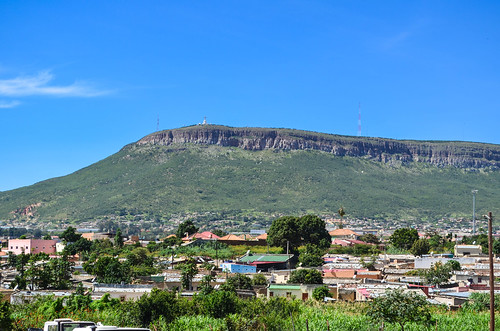
Lubango, lying at an elevation of 1700 – 1800 m, was founded by Portuguese settlers from Madeira at the end of the 19th century. Boers from South Africa also went as north as Lubango to establish a settlement, but were turned down back to Namibia. Since the local tribes didn’t want to settle there, Sá da Bandeira, as it was called until the independence in 1975, was the only city in Portuguese Angola with a white majority.
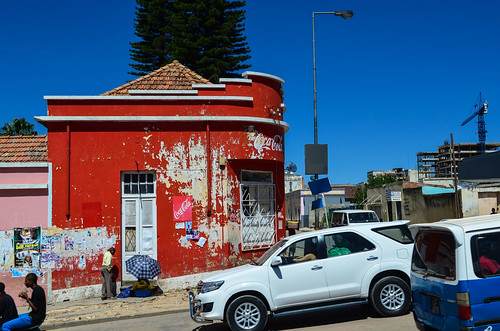
My priorities during the few days I will rest in Lubango are:
– eat correctly and recover fresh muscles.
– heal these ankle wounds, some have been open for a month now. I clean and disinfect them every day, apply new bandages, but they won’t cicatrize. They seem to get deeper and generate their quantity of pus every six hours or so. Worse, it seems that every time I scratch my skin after a new insect bite, it makes another open wound filled with pus that can’t cicatrize.
– replace my air mattress. The consumer support at Thermarest confirmed their warranty covers my delaminated one, but I must do without until their distributor in Cape Town (i.e. until the end). I know Angola isn’t the right place to buy good gear, but there must be at least one shop selling an inflatable mattress in this big town.

Lubango is easy to navigate. The city center is a grid of 5 x 5 streets extending over no more than a square kilometer, and has all the businesses, small and big ones. A bit out of town, there is a South African supermarket (Shoprite) and a mall, the Millenium.
At first sight, the Millenium is just a copy of Johannesburg’s Montecasino: a depressingly dark place with no windows and no natural light, with painted walls and ceilings trying to emulate an atmosphere from another continent.

But it is actually much worse. The indoor fountain is not working, the hundred of retail spaces are not entirely occupied, and it seems that half of the shops are in reality banks and ATMs. Yes, one of the particularities that makes Angola so special in Africa, is that there are almost more banks and ATMs than shops.
The mall is practically deserted except for the Unitel phone shop. I went to Millenium thinking I will find an open WiFi network and finally update my blog, but there is nothing. I already visited all the cafés in town, and the only one that provided WiFi closed. The only option is then the few cybercafés, where I am allowed, for 3 USD / hour, to destroy the F5 key because of the slow connection. For the record, 3 USD is what I used to negotiate for a whole day a cyber in West Africa.
I guess everyone has internet on their smartphones, just good enough for Facebook, and there’s no demand for anything else. High speed internet and uncapped contracts would be way too expensive anyway, like everything else in Angola.
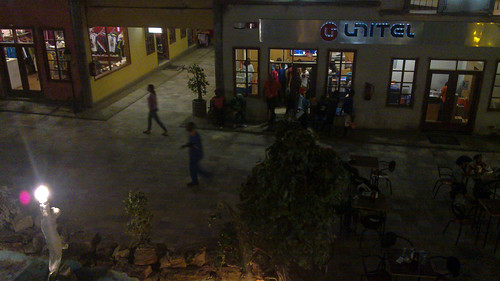
By the way, I find a sport & outdoor shop on the first floor of the mall: great news! They are waiting for a delivery of air mattresses, huge ones for home or people travelling with a 4×4, but I don’t expect to find any better anyway. They have fishing equipment, tennis gear, and among cycling stuff, they have gloves. Mines are completely destroyed, both the left one (original from Germany) and right one (from a spare Chinese pair bought in Guinea). Cycling gloves sell here for 99 USD. And it’s a pair made in South Africa, probably not as good as the German ones I had bought for less than 10 €. This is how crazy prices are. I could write a whole post with pictures of usual goods for the house and foods, with a serious but unbelievable price tag.
[Note: Two months later in Namibia, I will find an outdoor shop called Cymot, selling cycling gloves for 12 USD. All cycling gear there have the product line code 9919. I think 9919 was also the price in kwanza (100 Angolan kwanzas =1 USD, thus 9919 kz = 99 USD) at Lubango’s millenium mall, reinforcing my impression that prices in Angola are more a funny sequence of digits rather than a value connected to the product.]
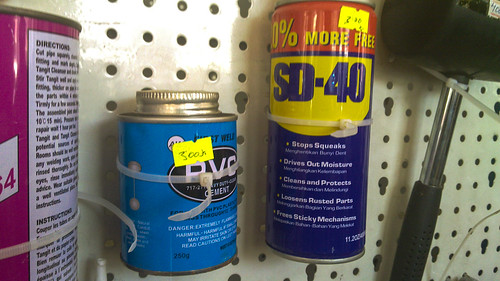
On the other hand, there are various Chinese mini-super-markets (average size shops selling as many things as supermarkets, from socks to televisions, from repair toolboxes to children toys) in the city center. They are the only ones to sell affordable goods, like Nike shoes for 10 USD. And of course, everything is fake, so it won’t last long. There are a few Mauritanians and a few Lebanese holding businesses in town, but they are almost invisible behind the Chinese. The totality of the dozens of photocopy-printing-laminating shops are Chinese.
With Angolan shops selling goods for three times their European price and Chinese shops selling cheap crap, I can’t say I don’t have choice, but neither of both business worlds are satisfying.
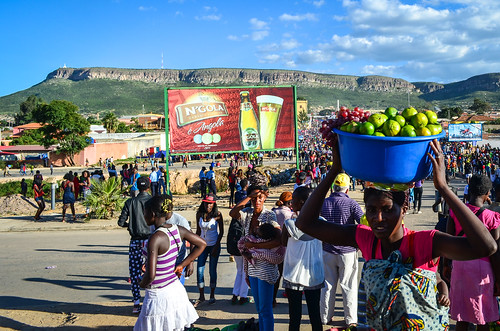
March 4th is holiday: Carnaval is in town. All shops close and I head back to the Millenium mall, whose roundabout is used for the parade. It is not as big as in Brazil, and emphasizes more on the cultural diversities than on the party time. Still, that makes lots of colors and little clothes.
The one large street is packed with people, mostly sellers and watchers, while each of Lubango’s neighbor villages in the Huila province showcase a team with traditional outfits.
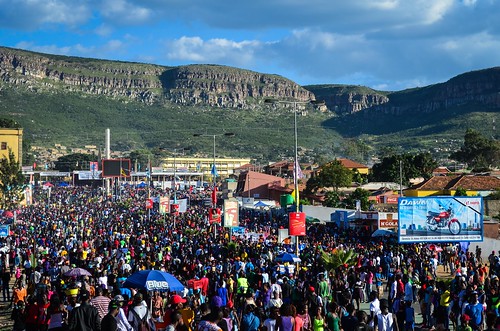
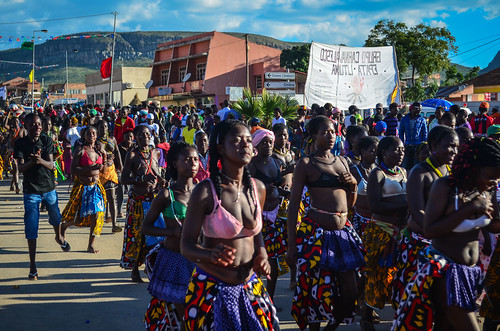
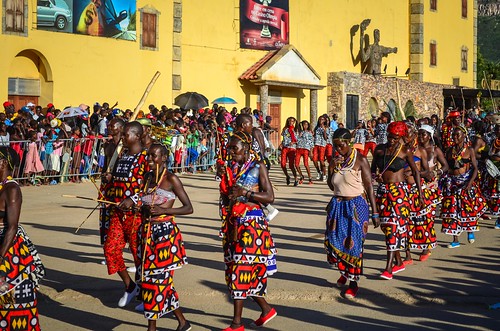






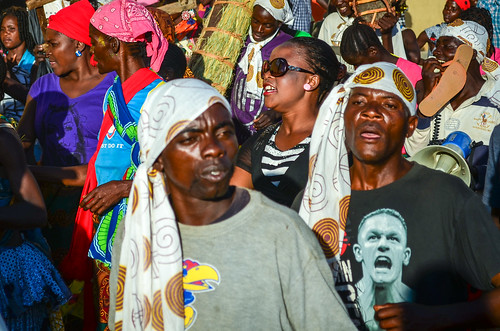
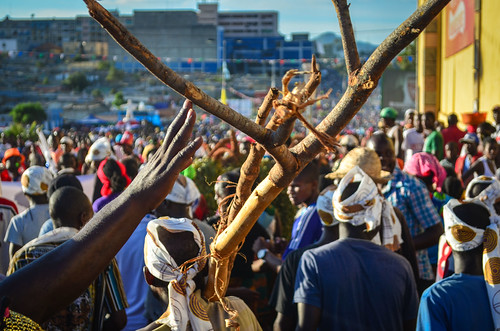
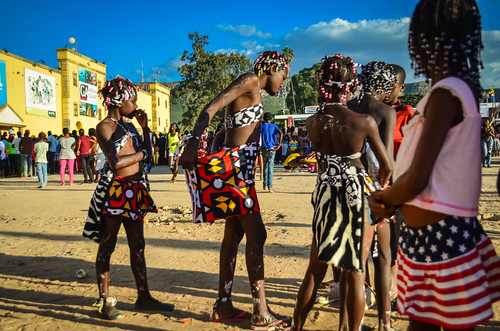
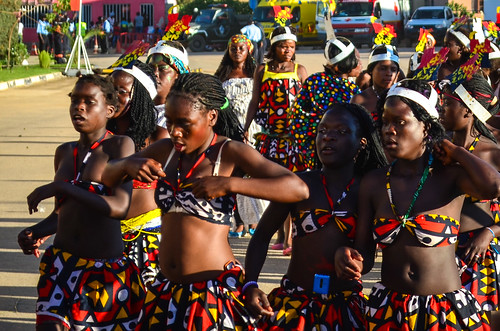

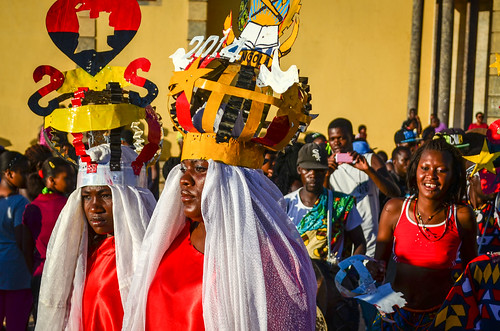
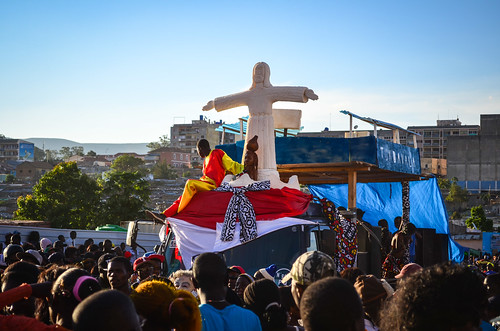
I am having more bad luck with my feet: I bought yesterday Chinese sandals to replace my current ones, bought in Freetown, Sierra Leone, that have been agonizing for a long time. My heels were touching the ground. I wear size 45 (US size 11) and there is not a single pair of shoes of this size in the whole town of Lubango. I visited all Chinese shops, all sports shops, and all supermarkets and PEP affiliates, unsuccessfully. Everywhere, it stops at 44. This new pair of Chinese sandals was the only one suitable but they are hurting me, and I come home with bleeding toes. I still have my ankles discharging pus and other parts of my skin not cicatrizing, so I now doubt I’ll be able to walk normally again.

Texeira has been a wonderful host so far. We have had interesting discussions and good food together, but I don’t want to abuse the hospitality of the catholic mission. He suggests I visit the reputable Russian doctor at the city hospital, or at least the nurses of the local posto de saúde (community health center).
He takes me there to make a blood test, and comes back with three boxes of medication and antibiotics. What am I suffering from? I don’t know. And I won’t know. Probably something wrong in my blood that prevents my skin to close again. It is the same outcome as when I had a super strong headache with vomitting for two days in Senegal: the doctor gives you medicine but won’t tell you what’s the problem.
Well, it’s better for me to think I found a cause to this problem, rather than continuing with the sole hope that I will heal by myself. That is what usually happens, but for a random reason this time, it seems it won’t.
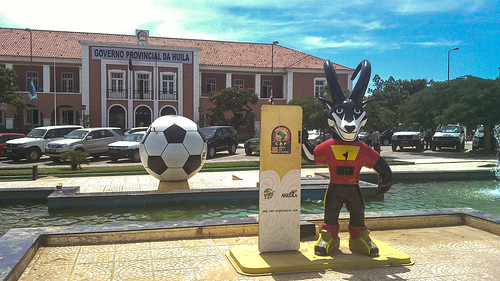
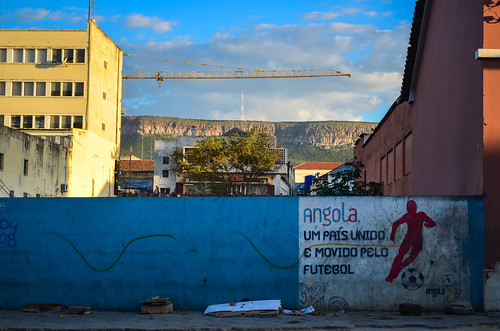
Now under medication, and still walking like a cripple, my stay at the catholic mission has to be extended. With the seminarians, I am well established in my routine, starting with the morning mass at 6:30.
I have also visited all the shops that could sell air mattresses and go for an ugly one at 50 USD after discount. I find this same mattress for 20 USD on a South African website. It weight three times my Thermarest, packs three times bigger, and requires 10 times more air to be inflated. Very ugly, but it’s the best solution for now. I’ll have to carry it on the top of my rear rack as it won’t fit in my panniers.
A few days later, I realize that the Shoprite supermarket has a small outdoors aisle, and I find the same mattress for 25 USD … Grrr … In the meantime, I sewed my saddle cover and adjusted my brakes, so as to be ready to leave again.

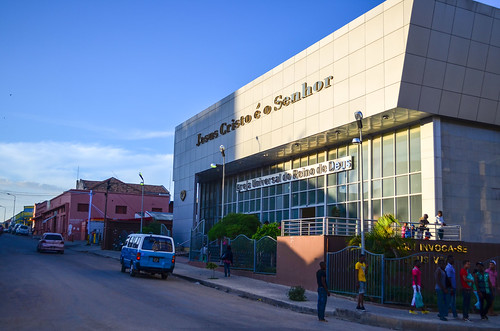
By the way, that long time spent on my laptop, without internet, in the living room of the mission had me peeking at the library. There are four volumes belonging to the Géographie universelle Quillet, a kind of atlas-encyclopedia edited in 1923.
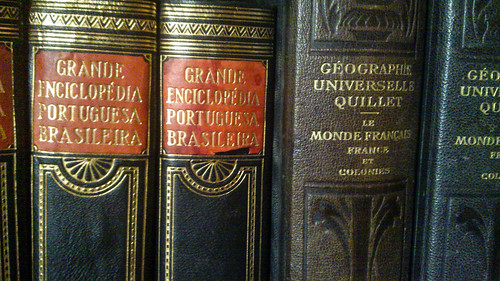
The contents are very detailed about France. Regions are described carefully both in terms of landscape and economic power. Mining and industry were booming at that time and the book praises cities that are completely unattractive today.
I moved on the “French colonies and the rest of the world” volume. At first, I found fantastic that anyone in France in the 1920s could learn so much about the Sahara and other African regions, where one would be very unlikely to set foot. It relates how hostile the colonies are, how a huge part of the African continent is under French rule, and how the settlers are improving the infrastructure with the brand new vehicles and tools developed in Europe.
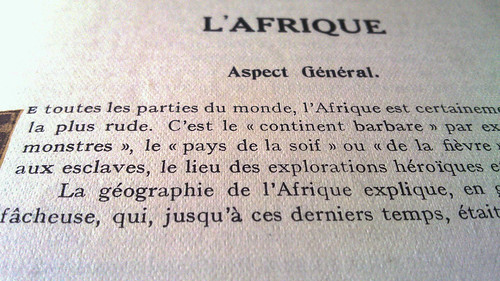
I also found interesting that, written in 1923, just a few years after seven European powers agreed to share the continent at the Berlin conference (for some without having any clue about the geography and the resources they just annexed), it lists the economic resources of the “barbaric continent” limited to agriculture. There is almost no mention of mining, and nothing about petrol. Four African countries make today the top 20 of the largest oil reserves (Libya 9th, Nigeria 10th, Algeria 17th, Angola 18th)(the USA are 12th). Quillet says in 1923 about the tiny but precious enclave of Cabinda, producing today 60% of Angola’s oil, that “with 10’000 inhabitants, despite fertile lands, Cabinda is squeezed between two powerful colonies and has certainly no future“.
The Géographie universelle also features “ethnological” facts that would certainly be written nowhere today:
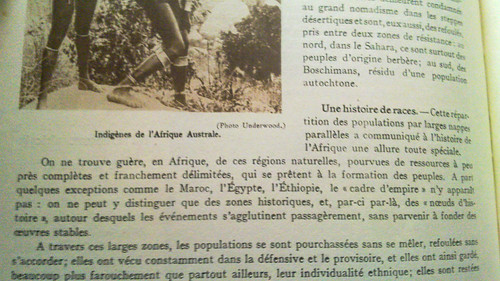

After two days of antibiotics, my wounds have stopped discharging pus, and after five days they look much better. I have drafted an itinerary for my next days: Lubango’s region, the Huíla province, is very scenic and I plan to go up and down and up and down and up and down and up again in a loop around the city.
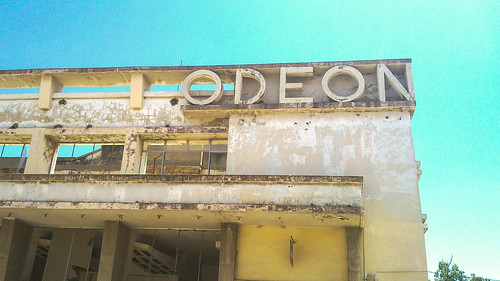
The closest attraction to Lubango is the Cristo Rei statue. It is a 30-meter tall statue of Jesus, built in the 1940s, overlooking Lubango. It is seen from almost anywhere in town, right there at the edge of the cliffs, but the road from the city center to the statue is 13 km long and 400 m of elevation gain.

On the top of the plateau, there is a military camp, a large rotating radar, and some buildings with Chinese signs. I have seen fighter aircraft from very close, as they fly over Lubango as low as when they manoeuvre over the Lac Saint-Point in France or over the Lake Brienz in Switzerland.
And the statue is at the very end of the road.
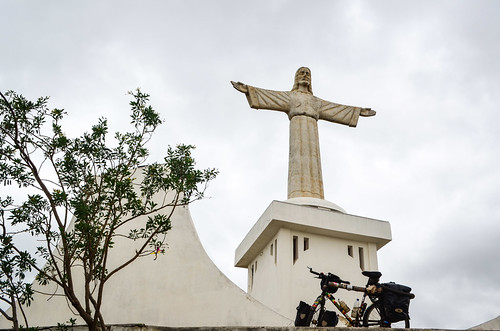
The view on Lubango is complete.

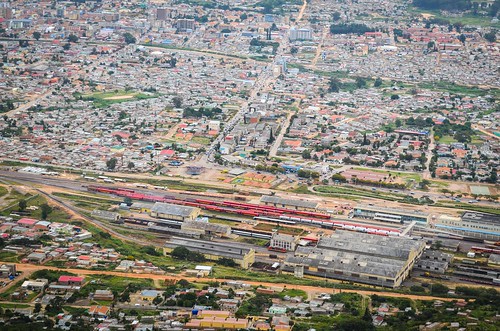
I don’t know what is the issue with the Portuguese and statues of Jesus, or if they are simply more religious than anyone else, as three other giant statues of Jesus are found on three other continents, the most famous one in Rio (Cristo Redentor), in Lisbon (Cristo Rei) and in East Timor (Cristo Rei of Dili). Funnily enough, the tallest statue of Jesus in the world (33 m) is not in a former Portuguese colony, but in Poland (Christ the King).


There are a few raindrops but it doesn’t deter me from my objective for tonight: down back to Lubango, and up on the other side to the special fenda da Tundavala!
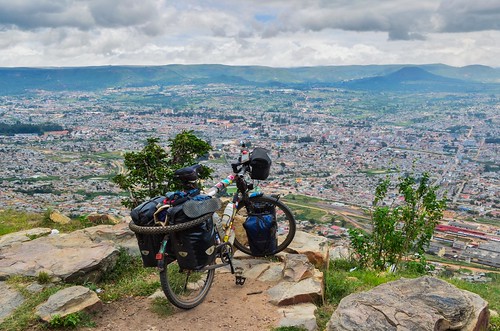







Wonderful adventure! I’m planning to go to Angola next month and cycle along the coast, departing from Lubango. Do you remember if you happen to see any bicycles for sale at reasonable cost in this town?
Hi Matheus,
I remember seeing lots of overpriced stuff there, but I can’t remember of any bike shop. It should be very possible to find a bike good enough to take the good road until Namibe or the paved roads around.
Sigo siendo adicto a su blog, una maravilla saludos desde las Islas Canarias ¡¡ Pablo Gallego
obrigado!
Fascinating. What a journey!
Wouah t’as les cheveux trop longs!!! 🙂
J’aime trop les couleurs du carnaval, les vêtements sont magnifiques.
Heal well though, and take care for the rest!!
Miho
arigatou! Ouais, je les ai fait pousser exprès pour la photo.
Les wounds sont healed. Namibia kara gulitinguzu